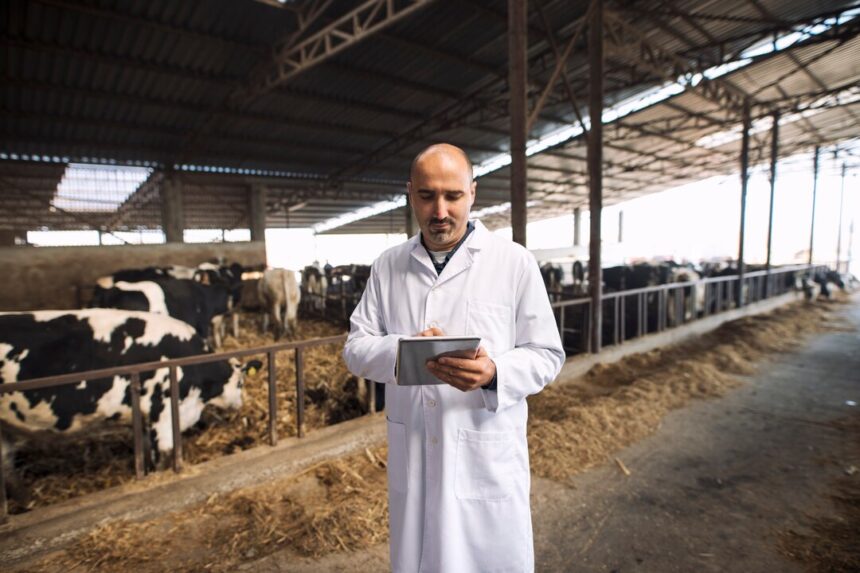Tick infestation poses a significant threat to the health and productivity of livestock worldwide. These blood-feeding parasites not only cause discomfort and irritation to animals but also transmit a variety of diseases that can have serious implications for both animal welfare and farm profitability. Effective tick control is therefore essential for maintaining the health and productivity of livestock herds. In this comprehensive guide, we will explore various strategies for managing tick infestation on livestock.
1. Regular Monitoring:
Regular monitoring of livestock for signs of tick infestation is essential for early detection and intervention. Conduct thorough inspections of animals, paying close attention to areas where ticks are commonly found, such as ears, udders, groin, and between toes. Look for ticks attached to the skin or feeding sites, as well as signs of irritation or skin inflammation.
2. Pasture Management:
Tick populations thrive in tall grass and dense vegetation, making pasture management an important aspect of tick control. Implement rotational grazing practices to prevent overgrazing and maintain pasture health. Mowing pastures and clearing brush can also help reduce tick habitat and exposure to livestock.
3. Chemical Treatments:
Chemical control methods, such as acaricides, are commonly used to manage tick infestations on livestock. These products are available in various formulations, including sprays, dips, pour-ons, and spot-ons. Consult with a veterinarian or agricultural extension specialist to select the most appropriate acaricide for your specific situation, taking into account factors such as tick species, livestock species, and environmental conditions.
4. Integrated Pest Management (IPM):
Integrated pest management (IPM) combines multiple strategies to effectively control tick infestations while minimizing environmental impact and resistance development. IPM strategies may include a combination of chemical treatments, biological control agents, cultural practices, and host resistance.
5. Biological Control Agents:
Biological control agents, such as predatory mites, parasitic wasps, and entomopathogenic fungi, can help suppress tick populations in livestock environments. These natural enemies prey on ticks at various life stages, reducing their numbers and limiting their spread. Introducing beneficial organisms into tick-infested areas can be an effective component of an integrated tick management program.
6. Environmental Modifications:
Modifying the livestock environment to make it less hospitable to ticks can help reduce infestation levels. Providing shaded areas and installing sprinkler systems or misters can create a cooler, more humid microclimate that is less favorable to ticks. Additionally, reducing moisture and improving ventilation in animal housing facilities can help discourage tick activity.
7. Host Management:
Implementing measures to reduce contact between livestock and tick-infested areas can help minimize the risk of infestation. This may include fencing off wooded or brushy areas, avoiding grazing in tick-prone pastures during peak activity periods, and providing animals with access to clean, tick-free resting areas.
8. Quarantine and Treatment:
Newly introduced livestock should be quarantined and thoroughly inspected for ticks before being introduced to existing herds. If ticks are detected, affected animals should be promptly treated with appropriate acaricides to prevent the introduction and spread of infestations.
9. Personal Protective Measures:
Livestock handlers should take precautions to protect themselves from tick bites when working in tick-infested areas. This may include wearing long-sleeved shirts, pants, gloves, and closed-toe shoes, as well as applying insect repellents containing DEET or permethrin to exposed skin and clothing.
10. Record Keeping and Evaluation:
Maintaining accurate records of tick control activities, including treatment dates, products used, and treatment outcomes, is essential for evaluating the effectiveness of tick management strategies over time. Regularly review monitoring data and adjust control measures as needed to address changing tick populations and environmental conditions.
Conclusion:
Tick infestation poses a significant threat to the health and productivity of livestock herds, but with careful management and proactive control measures, it can be effectively managed. By implementing a combination of strategies, including regular monitoring, pasture management, chemical treatments, integrated pest management, and environmental modifications, livestock producers can reduce tick infestation levels and minimize the associated risks to animal health and welfare. Collaborating with veterinarians, agricultural extension specialists, and pest management professionals can help develop tailored tick management plans that meet the specific needs of individual farms and livestock operations. With diligent management and effective control measures in place, livestock producers can safeguard the health and productivity of their herds while minimizing the impact of tick infestation on farm profitability.







